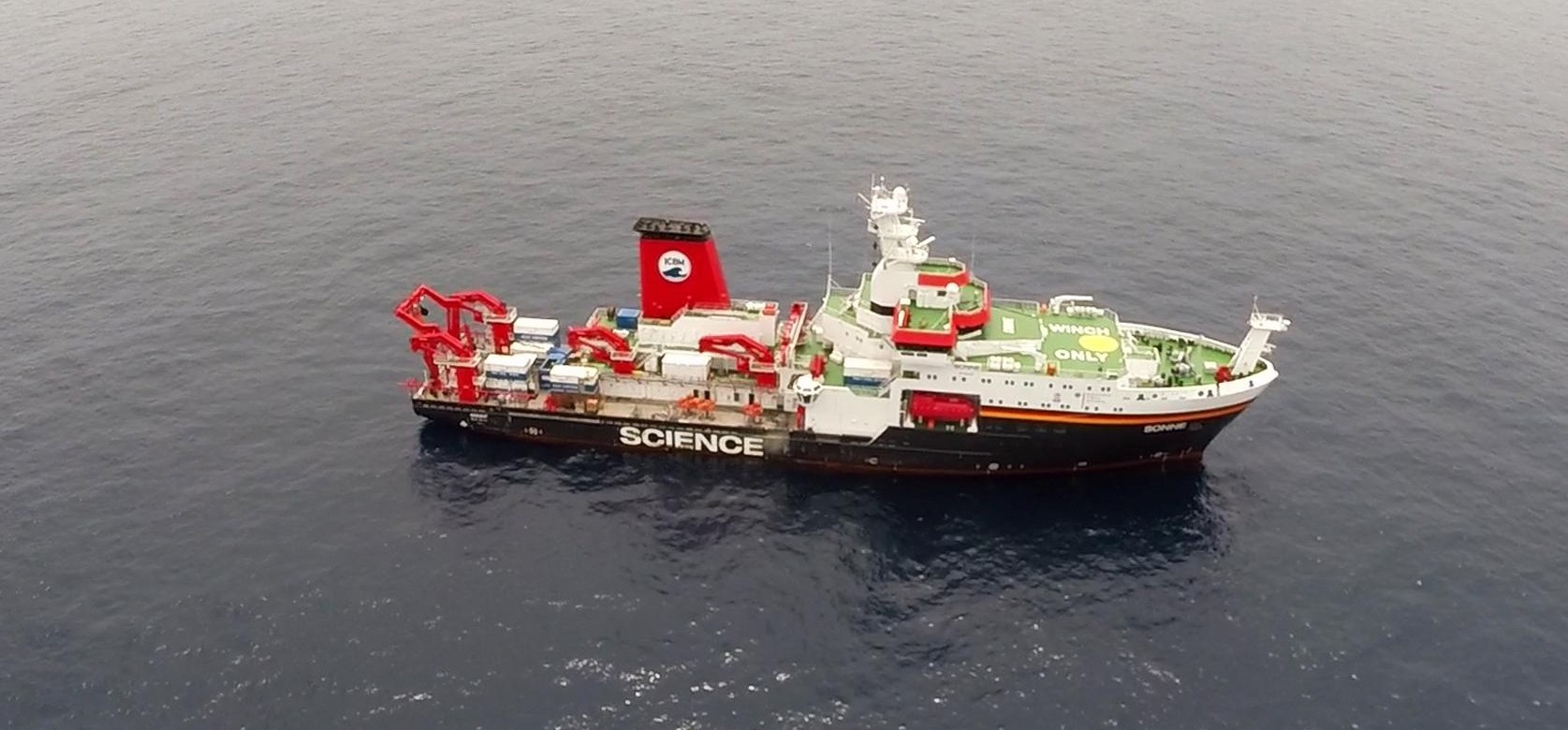- Press Office
- Press releases 2020
- Plastic in the deep sea
Plastic in the deep sea: Virtually unaltered after a quarter of a century
Plastic products are durable. On one hand this is a great advantage, but on the other hand, if the plastic enters the environment, this advantage turns into a problem. According to current knowledge, natural degradation, as with organic matter, does not take place. It can only be estimated how long plastic debris actually remains in the environment, there are no corresponding long-term experiments.
This applies particularly to the deep sea, which is poorly explored itself. Plastic objects found by chance with the help of deep-sea robots or other underwater vehicles are difficult to date. During an expedition with the German research vessel SONNE in 2015, researchers from the GEOMAR Helmholtz Centre for Ocean Research Kiel, the Max Planck Institute for Marine Microbiology in Bremen and the Kiel University were able to recover several pieces of plastic waste from the seabed of the Eastern Pacific Ocean in a depth of more than 4000 meters. With a little detective work, they were able to estimate the age of deposition quite accurately. For the first time, this offered the opportunity to conduct a long-term study on plastic degradation in the deep sea. The study was now published in the international journal Scientific Reports.
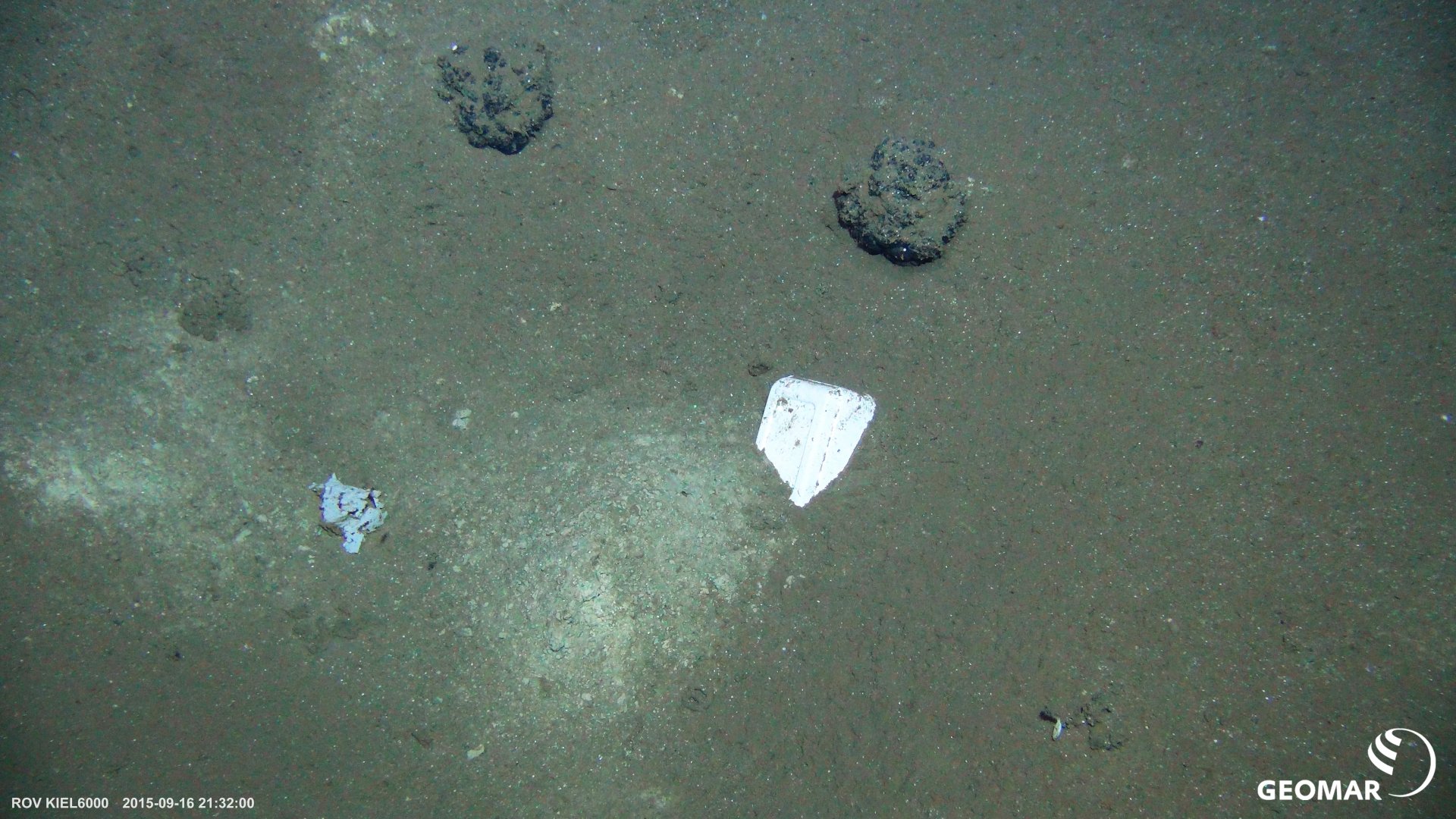
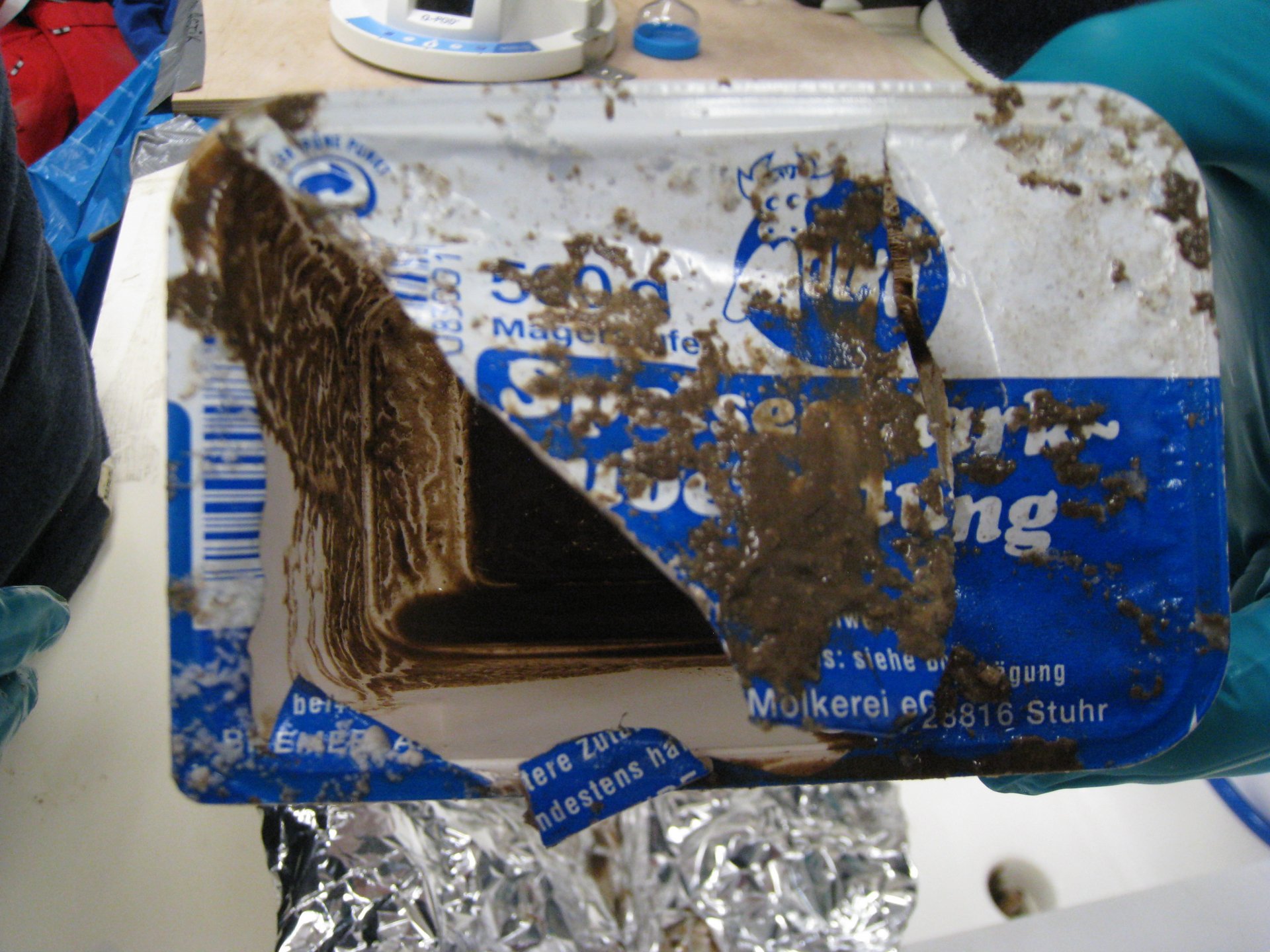
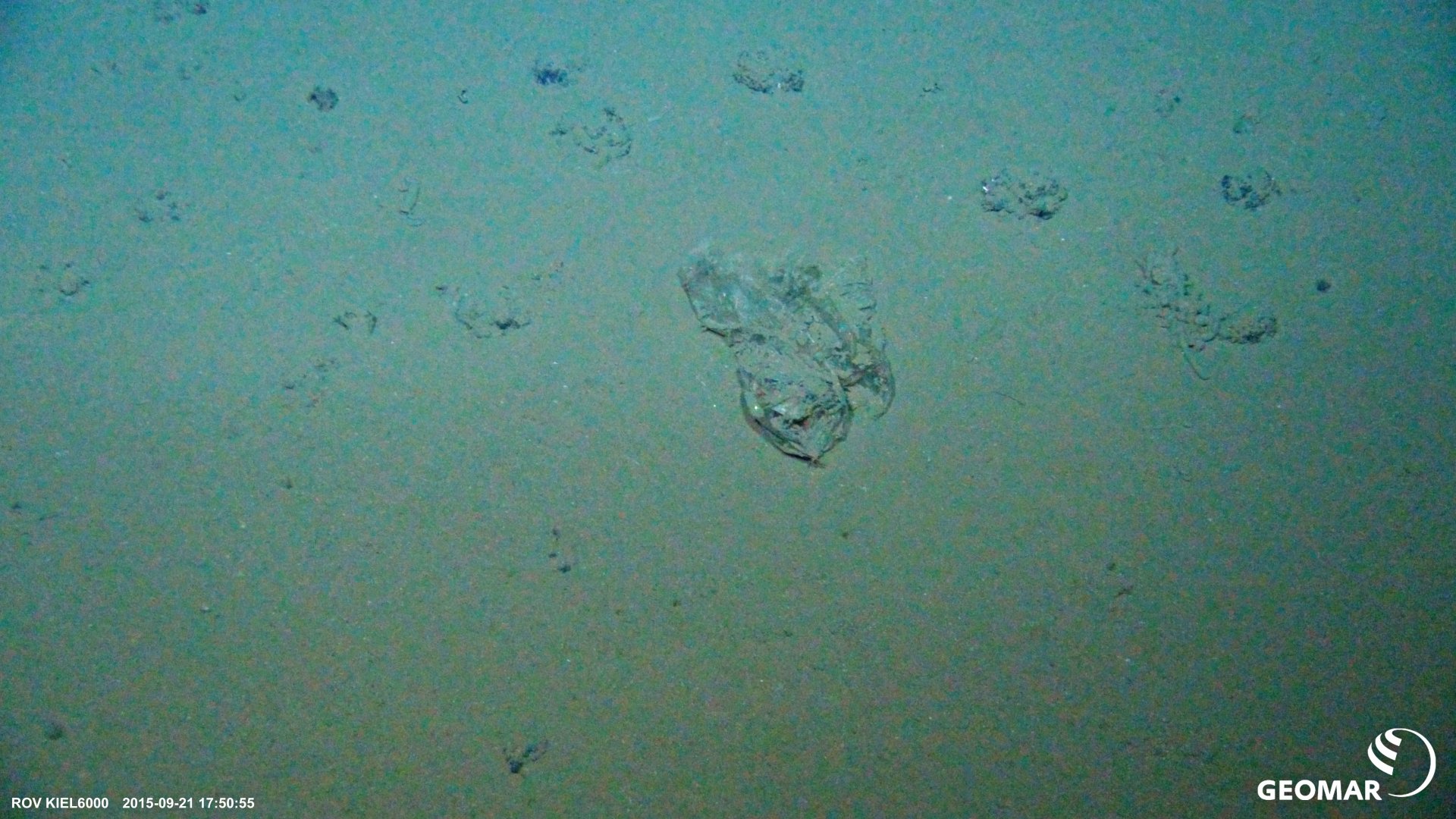
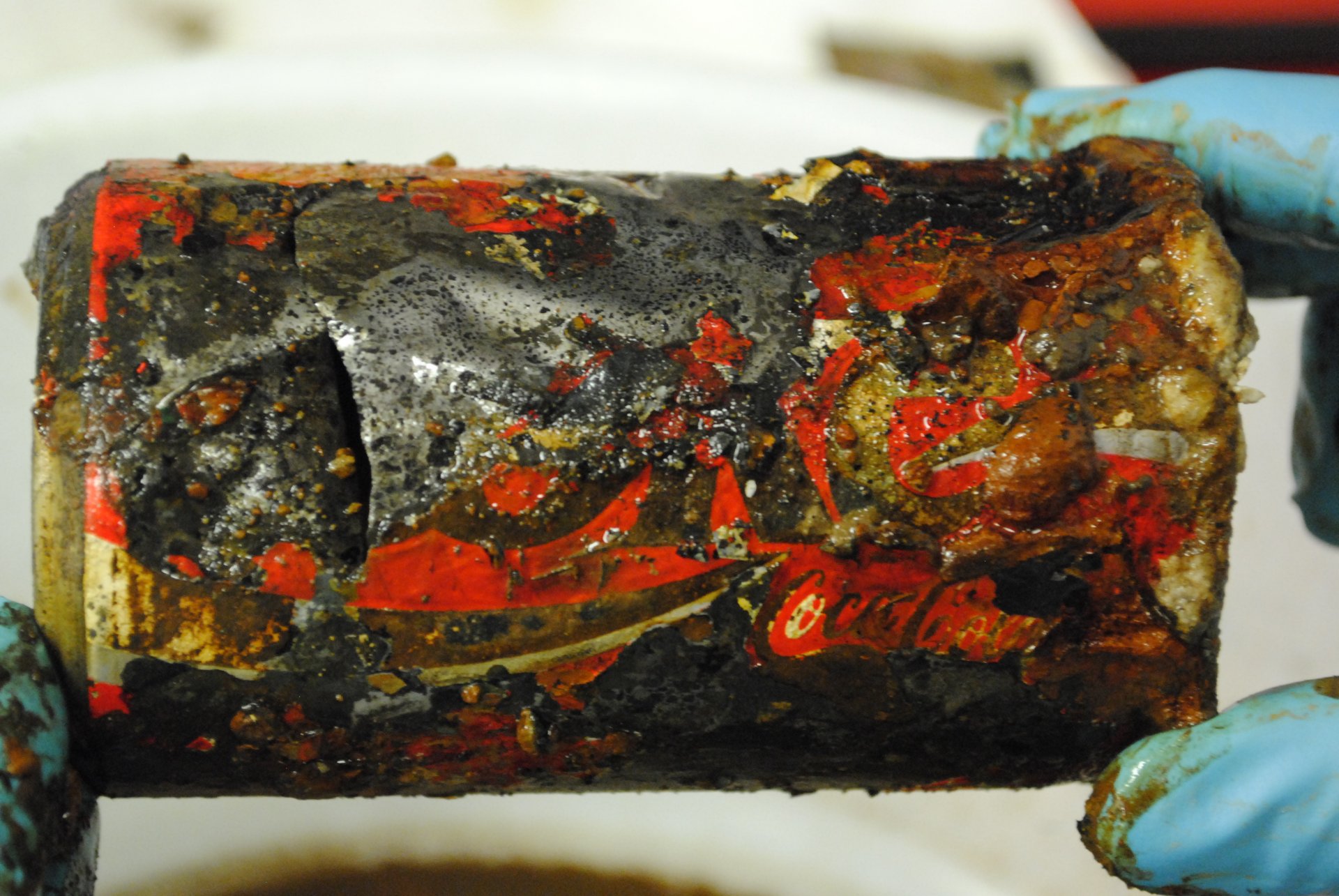
Science detectives at work
The research team was out in the Pacific, about 440 nautical miles (815 km) off the coast of Peru, to investigate another long-term experiment in the so-called DISCOL area. There, German scientists had ploughed a piece of seafloor in 1989 in order to understand the environmental effect of potential future mining of manganese nodules. They visited this site again in 1992, 1996 and in 2015 to study the recovery of the deep-sea ecosystem.
During this study in 2015, the remotely operated deep-sea robot ROV KIEL 6000 recovered some waste from the seafloor. Among it was a plastic bag containing a Coke can, which was part of a special edition produced for the Davis Cup 1988. “The aluminum can itself would have corroded in the deep sea, if it was not wrapped tightly inside a plastic garbage bag that preserved it. This also indicates that the garbage bag must be of the same age”, says Dr. Matthias Haeckel from GEOMAR, project manager on board back then and now co-author of the study.
A second recovered item was a curd box from a German manufacturer. The printed address shows a five-digit postal code, which were not introduced in Germany until 1990. However, the manufacturer was bought by a rival company in 1999, and the brand name disappeared. Here, too, the time frame was therefore well defined.
Degradation: None
“Since the DISCOL area is far away from important shipping routes, the plastic bag and the curd box could be attributed to the DISCOL expeditions in 1989 and 1992 or 1996,” says Dr. Haeckel.
At least, this offered the extremely rare opportunity to examine in detail datable plastic objects from the deep sea. “It turned out that neither the bag nor the curd box showed signs of fragmentation or even degradation”, says biochemist Dr. Stefan Krause from GEOMAR, lead author of the study, who led the onshore analyses in the home laboratories.
Plastic shifts the microbial community and functions
Another scientifically most interesting finding was that the microbial community on the plastic surfaces differed from the one in the surrounding seafloor sediments. All of the species could also be found in the deep-sea sediment, but apparently, larger accumulations of plastics could locally cause a shift in the ratio of the predominant species. “From a microbiological point of view, the results of this study are quite exiting”, adds Dr. Massimiliano Molari from the Max Planck Institute for Marine Microbiology, who analysed the microbial community. “The plastic debris drastically changed the environmental conditions. For example, it most likely reduced the flux of oxygen, thereby creating better conditions for bacteria requiring steep redox gradients. Furthermore, the microbial community associated with plastic debris is dominated by so-called chemolithotrophs, which use inorganic substrates to gain energy. Thus the deposition of plastic items is locally impacting not only the microbial diversity and community structure, but also the microbially mediated functions and their influence on the surrounding environment.”
Pointing the finger at ourselves and learning from it
Overall, the study provides the first scientifically sound indication of the fate of plastic debris in the deep sea. At the same time, the findings provide a good argument for all of us to pay even closer attention to compliance with regulations regarding waste on board. “Fortunately, the mentality has changed considerably since the 1990s. Today, both, the crews of the ships and the research teams on board take great care to ensure that no waste is disposed overboard,” says Dr. Haeckel.
Original publication
Krause, S., M. Molari, E.V. Gorb, S.N. Gorb, E. Kossel, M. Haeckel (2020): Persistence of plastic debris and its colonization by bacterial communities after two decades on the abyssal seafloor. Scientific Reports, www.nature.com/articles/s41598-020-66361-7
Participating institutions
GEOMAR Helmholtz Centre for Ocean Research, Kiel, Germany
Max Planck Institute for Marine Microbiology, Bremen, Germany
Christian-Albrechts-University, Kiel, Germany
Please direct your queries to:
Head of Press & Communications
MPI for Marine Microbiology
Celsiusstr. 1
D-28359 Bremen
Germany
|
Room: |
1345 |
|
Phone: |

